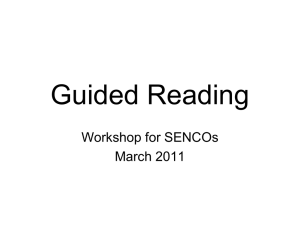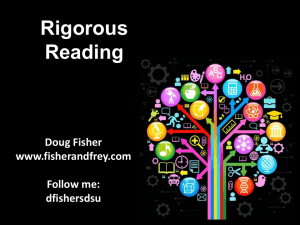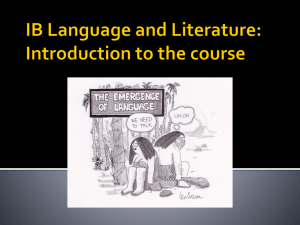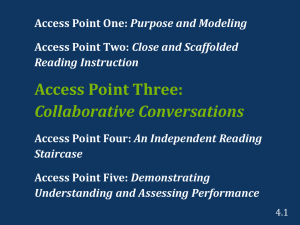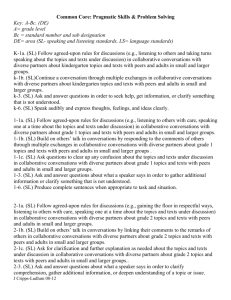Access Point Four: An Independent Reading Staircase
advertisement
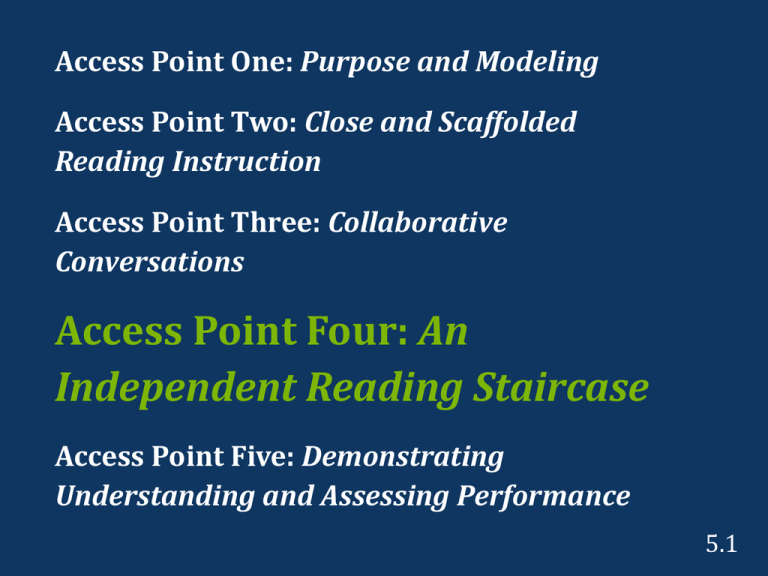
Access Point One: Purpose and Modeling Access Point Two: Close and Scaffolded Reading Instruction Access Point Three: Collaborative Conversations Access Point Four: An Independent Reading Staircase Access Point Five: Demonstrating Understanding and Assessing Performance 5.1 What’s Our Purpose for Module 5 ? Understand the goal of independent learning when students access complex texts: To use the literacy strategies that have been taught through modeling close reading instruction scaffolded reading instruction collaborative learning structures Practice building effective reading habits Nurture student development through independent reading and sustained silent reading through conferences. Analyze the similarities and differences between independent reading and silent sustained reading. Examine the four elements of conferences, and understand how to use conferences for formative assessments. 5.2 Goals of Independent Learning 1. Independent learning workbook pages, worksheets, or busy work. 2. Goals of independent learning are To empower students to develop selfregulation skills For students to increase their sense of competence For students to set their own goals 5.3 Small-Group Discussion: The Goals of Independent Learning 1. How does this extend your knowledge? 2. Does it validate some instructional structures already in place for independent learning? 3. Does it make you question some instructional independent learning structures already in place? 5.4 Directions for Jigsaw Procedure for Examining Independent Reading to Assess Complex Texts 1. Work in groups of four. 2. Each group member chooses a different section to read in Chapter 5: a. Vignette (introduction) at the beginning of Chapter 5 and Figure 5.1: Reading Conference Form b. Introduction after Accessing Complex Texts Requires Independent Reading c. Reading Volume and Figure 5.2: Relationship Between Achievement and Independent Reading d. Positive Reading Attitudes 3. Read for 5–7 minutes. 4. Write down salient points on the graphic organizer and share with your group. 5.5 Independent Reading and SSR 1. When students are reading by themselves, are we providing the most effective support? 2. In particular, are we providing support for students to access complex texts when they are reading and practicing strategies that we have been modeling and taught in close reading and scaffolded reading instruction? 3. Is there any element in one or both structures that needs refinement? 5.6 Directions for Jigsaw Procedure for Students Respond During Independent Reading 1. Work in groups of four. 2. Each group member chooses a different section from Chapter 5: a. Introduction and Sticky Notes b. Reading Logs c. Reflection Journals d. Students Talk About Texts and Figure 5.8 3. Read for 5–7 minutes. 4. Write down salient points on the graphic organizer to share with your group. 5.7 If students are to be sharing in collaborative conversations, they should be explicitly taught how. Book conversations provide occasions to sharpen listening skills. Students become mindful of their learning through these tasks and interactions, which in turn builds their metacognitive skills. 5.8 Four Elements of Effective Conferences Inquiry • Begin by conversing with the student about his or her work • Goal: Assess the student on one literacy focus topic per session Recordkeeping Decisions • Make anecdotal notes about the main points of the conference • Based on the evidence culled from the opening conversation, rapidly make a decision about what should be taught next Instruction • Brief procedural, literary, or strategic instruction to help the student move to the next level of independent learning • Student attempts the work with teacher support 5.9 For students to develop essential reading and thinking habits, which are vital for successful college and career lives, they need to consistently read independently and confer with teachers about their reading. Next session: Access Point Five: Demonstrating Understanding and Assessing Performance 5.10


